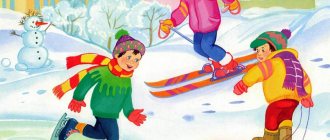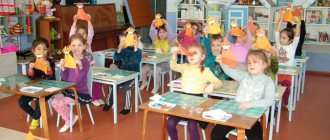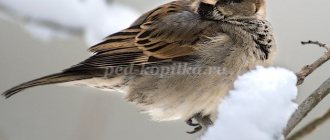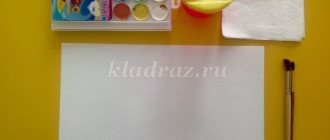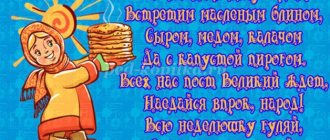Summary of the physical education lesson “Winter fun” for children of the senior group in kindergarten
Physical education lesson “Winter Fun” for preschool children 5-7 years old
Author: Marina Dmitrievna Solodova, physical education instructor, MBDOU “Kindergarten No. 1 named after. Yu.A. Gagarin" Description of the material: I offer a summary of the physical education lesson "Winter Fun" for children 5-7 years old; all outdoor games are winter themed; The development will be of interest to physical education instructors and preschool teachers. Goal: to consolidate the skills acquired in physical education classes. Objectives: - consolidate children’s knowledge about winter and winter phenomena; — ensure high physical activity; - create an atmosphere of positive emotional mood. Inventory and equipment: “snowballs” - dummies according to the number of children; balls according to the number of children; track for the prevention of flat feet; detailed carved snowman - 1 piece, 2 pieces, 3 pieces, bucket, carrot, eyes; song “As if there were no Winter.” Progress of the lesson: Physical education instructor. Construction. Posture check. Guys, it's winter here. Look out the window: the trees are white, wrapped in snow, a blizzard has swept the snowdrifts. You can't even hear the birds singing now. Winter brought frosts and winter fun - games. So today we will have fun and play. Formation into a column Introductory part: - we are walking into the winter forest (walking at a marching pace);
— raise our legs higher
(walk high, raising our knees);
- and their legs will jump straight along the road
(jumps);
- they jumped, jumped and stood up, “Stop!”
(stop);
- feet will walk quietly along the narrow road
(follow the footprints);
- they ran after each other and were not at all tired
(easy running);
- and again we walk, raising our legs
(regular walking). Formation into a column of two outdoor switchgear (general developmental exercises) “Winter fun” 1. “Snow-white winter has come to visit us again”
I.p.: legs apart, arms to the sides.
1-clap in front of you, arms straight forward; 2-clap behind the back; 3-4-too; pause – 6 times.
2.
“When I shook my sleeve, everything was covered with snow.”
I.p.: legs slightly apart, feet parallel, arms down – alternately raising arms.
3.
“The blizzard has blocked the way, it’s impossible to pass or pass”
I.p.: legs apart, hands on the belt - inhale.
1-2-lean forward, reach your toes with your hands - exhale; 3-4-p. – 6-8 times
4.
“The blizzard is a white top, covering the ground with snow”
I.p.: o.s., hands down.
Quickly turn around yourself to the right (3-4 times)
and also to the left.
5.
“An icy wind is blowing, a swarm of snow is swirling and circling”
I.p.: 1-4 - perform a “spring” (half squats), at the same time arms back and forth.
Pause. 4 times.
6.
“We don’t tremble from the frost, we will run away from the frost”
I.p.:o.s., hands on the belt. Rhythmic running in place, raising your knees high, pulling your toes; the pace is average. On the count of 1-10, run in place, then on the count of 1-8, calmly walk in place. Repeat 3-4 times
Breathing exercise “Blow a snowflake” Main part The instructor divides the children into two columns, the children perform the following exercises: - “Catch a snowball”
- throwing a ball up and catching it with both hands.
—
Game “Snowballs”
- children are divided into two teams, located on both sides of the court; At a signal, they throw “snowballs” - dummies; on whose side of the hall there are fewer snowballs, that team wins.
“Build a Snowman” relay race – whose team can build a snowman the fastest. The final part of the M/I “The Blizzard worries once” - the children stand in a circle, to the soundtrack “Blizzard”, the instructor with the children says the words “The Blizzard worries once, the Blizzard worries twice, the Blizzard worries three – the snow figure freezes!” — the guys are making a figure.
Arranging children in a line Reflection Guys, what games do we play in winter? What games did you like best? Physical education instructor. Guys, you were great today! Healthy, cheerful, everything worked out for you! Exit from the hall to the music “If only there were no winter”
We recommend watching:
Physical education leisure in the senior group. Defender of the Fatherland Day Physical entertainment for children of the preparatory group. Scenario International Sports Day in kindergarten. Scenario of sports entertainment in the senior group Physical education entertainment in the senior group in the summer
Similar articles:
Sports festivals in kindergarten and senior group. Scenarios
Physical education leisure in the preparatory group in the winter in the hall
Consultation for teachers
Guidelines
A hike is an organized journey or walk, a joint movement of a group of people for a specific purpose along a specific route.
Walking trips take place as part of the daily routine of preschool educational organizations. Teachers organize walks with children to the forest, park, square, as well as a green area on the territory of the kindergarten together with the parents of the pupils. Such walks are an organized type of activity, during which health-improving tasks are solved, motor skills and physical qualities of children are improved, their communicative and cognitive needs are satisfied, and interest and aesthetic attitude towards nature are cultivated.
Approximate structure of a walk-hike. The walk-trip begins with an organizational moment: all participants gather, the teacher conducts a roll call and briefing. Then the group moves to a halt, during which there may be short stops, both for rest and for observing interesting objects. The final point of the hike is a rest stop.
The resting place should be comfortable for rest. It is possible to have a picnic, set up a tent, organize games, etc. At the end of the stop, gather the children and clean the area. Then the group moves to the kindergarten; during the return there may be short stops for rest and observation.
Such walks and hikes should be carried out with pupils of senior preschool age. At this age, children are quite independent, and friendly relationships develop between peers.
Walking trips cannot be carried out frequently. The optimal number of such walks is 2-3 per year. When such events are held more frequently, they lose their attractiveness, and children’s interest in them decreases.
It is important that pupils look forward to outings, prepare for them, and prepare themselves emotionally. Therefore, we must try to ensure that after such walks children retain pleasant memories in their memory, and not negative impressions associated, for example, with fatigue from a long walk.
Algorithm for preparing a walk-hike:
— Determining the route for a walk-hike — Coordination of the route with the administration of the preschool educational institution — Careful study of the route, walking it by adults — Involving the parents of pupils to participate in the walk-hike — Selection and preparation of the necessary equipment — Preparation for briefing for the participants of the hike (determining the date, time, duration of the hike, recommendations for tourist equipment - clothing and contents of the backpack).
Preliminary work with children may include: holding conversations, organizing relay games, reading fiction and watching tourist videos. It is very important to explain to children the rules of conduct on a hike, talk about the need to obey the leader of the hike, be organized, coordinate your actions with the actions of others, follow safety rules: do not come close to the fire, do not jump in a tent, etc.
A hike may contain a surprise moment: an unexpected meeting or an interesting task. During a break and rest, it is good to play games that stimulate the cognitive and intellectual activity of children, outdoor and sports games. Students should be given the opportunity to demonstrate independence and experience for themselves all the difficulties in organizing everyday life during a hike, for example, those associated with setting up a tent.
The presence of parents, especially dads, will be valuable, communication with whom will enrich the children's experience.
Not all preschool organizations have the opportunity to go outside the kindergarten, but it is recommended to first organize a walk around the territory of the institution . This type of walk is an imitation of an adult hiking trip. It would be good if it included all the elements of a hike: gathering, a long walk, a halt, “getting together” around a fire (not necessarily a real one) and “returning” to kindergarten.
At the end of the hike, you can exchange impressions and fill out a diary. It is important that children remember the trip as an interesting journey, discovering something new, admiring the world around them, singing around the fire, playing games, communicating with each other.
Guidelines for organizing sports walks
A sports walk is a type of walk that uses a variety of elements of children’s sports-themed activities.
Sports walks can be held at least once or twice a month on those days when directly educational activities are organized that require a lot of mental stress, or directly educational activities in artistic creativity.
Depending on weather conditions, physical activity in the air can be of varying intensity so that they do not become overcooled or overheated. The teacher determines exactly how physical activity will be organized before going for a walk, focusing on specific weather conditions. During a sports walk, you should alternate tasks with high physical activity and games of low mobility, team games and subgroup, individual exercises.
Organizing a sports outing involves introducing students to various sports and athletes. An excursion or a targeted walk to a stadium (city, school, courtyard) is possible. Watching how athletes or schoolchildren are engaged will help to arouse interest in preschoolers and a desire to play sports.
A sports walk cannot be filled only with motor activities. It is recommended to select tasks of a cognitive nature and a sports orientation. For example, didactic games (“Summer and winter sports”, “Which sport is the odd one out here?”, “Recognize by silhouette”, “Who can name more types of ball sports”), attention games (“Is the starting position when throwing correct? , run"), on the imagination ("Depict a sport"). You can also include literary tasks (riddles, counting rhymes, poems).
Sports walks require preliminary work. An important stage in preparing for this type of walk is for children to gain experience in using physical education equipment: a racket, a ball, a jump rope, etc. Since during the sports walk the pupils play together with the teacher, they master skills faster.
with children of primary preschool age, you can organize a variety of outdoor games of a plot nature, including basic types of movement. You can build mock sports grounds where older students will play with younger ones, give them motor tasks, and teach them certain motor skills.
with children of senior preschool age about the history of the development of sports, introduce them to ancient and modern sports games, and tell them about the Olympics. You can introduce role-playing games “Olympics”, “Sports Clubs”, “Football Match”, in which students will be able to try on the roles of a commentator, judge, spectators, athletes, ticket sellers, etc.
Starting from the older group, team sports games adapted for preschool age should be introduced: pioneer ball, football, hockey, volleyball, tennis, etc. You can tell your students about folk games that were popular in the childhood years of their parents and grandparents, such as gorodki, hopscotch, and stander. It is advisable to devote at least half of the time of the entire sports walk to sports games.
The structure of a sports walk may include:
— Organizational moment or introductory conversation; — Outdoor, sports games; - Sport exercises; - Independent activities of children; — Individual work in various areas of development of students;
Summing up the walk, completing a creative task.
It is important to distinguish such walks from sports events - carefully prepared events for children that require them to have certain skills and abilities. Sports walks provide students with some freedom of choice (for this, several options for tasks, games, and exercises should be selected), while their interests and desires are taken into account. Outings are not as strictly structured as sports events and entertainment.
Approximate scenarios for walks, hikes and sports walks are presented in the magazine “Handbook of a senior teacher of a preschool institution” No. 10 / October 2013,
No. 11/ November 2013.
Literature:
— “Methodological recommendations for organizing walks and hikes”, K.Yu. Belaya, E.A. Karalashvili, L.I. Pavlova // “Handbook of a senior teacher of a preschool institution” No. 10 / October 2013, p. 10 - “Methodological recommendations for organizing sports outings”, K.Yu. Belaya, E.A. Karalashvili, L.I. Pavlova// “Handbook of senior preschool teachers” No. 11/ November 2013, p.4
Card index. Physical education complexes on a walk for children of the preparatory group.
№1
1h
. Walking and running are normal. Run in all directions at the signal.
2h
. 1. Game “Don’t knock down the pin.” Children stand in 2 columns, opposite the pins.
On command, children run around the pins in a “snake” fashion, trying not to knock them over. The column that knocks down the fewest pins wins.
2. Game exercise “Race”. Children line up in 3-4 columns on one side of the site. At the signal, the first ones run in a race, etc.
3. Exercise “Tossing the ball.” Throwing a ball and catching it with 2 hands.
3h
. Walking, running, jumping along the path around the kindergarten. Breathing exercises.
№2
1h
. Walking and running are normal. Run in all directions at the signal.
2h.
1. Walk along a narrow path, keeping your balance.
2. . “Pass the ball” relay race. Pass the ball in a column from the first to the last player.
3. . Passing the ball between the legs from the first to the last player in the column.
4. Game “Throw the ball.” Throwing the ball in pairs in different ways.
3h.
Walking, running, jumping along the path around the kindergarten. Breathing exercises.
№3
1 hour
Walking is normal. Run as usual, raising your knees high. Walking with long strides.
2h. Relay races.
1. “Move the pin.” Children stand in 2 columns. On command 1, they run, take the pin, return and give it to the next one. 2-run and put the pin in place, etc.
2. “Whose team will build up faster.” On command they scatter, on signal they form up.
3. "In places." At the signal “to go for a walk” the children perform any movements; at the signal “take their places” they form a column or a circle.
4. “Sully the last one.” Children are divided into 2 columns. The first player on each team tries to stain the last player.
3h.
Healthy run around the kindergarten. Walk at a slow pace.
№4
1 hour
Walking is normal. Run as usual, raising your knees high. Walking with long strides.
2h.
1. P/I “Sly Fox”.
2. P/I “Mousetrap”.
3.P/I “We are funny guys” (with complication).
3h
. Healthy run around the kindergarten. Walk at a slow pace.
№5
1h
. Walking is normal. Slow run, at the signal - in a circle. (3-4 times).
2h
. 1. Basketball. Their basketball player stance is throwing the ball into the hoop.
2. Throwing the ball in pairs to each other from a distance of 2m.
3. Throwing the ball against the wall from the chest with 2 hands and catching it.
3h.
Healthy run around the kindergarten. Walk at a slow pace.
№6
1 hour
Walking is normal. Slow run, at the signal - in a circle. (3-4 times).
2h.
1. P/I “Trap in pairs”. Children run in all directions, a couple of drivers, holding hands, catches up with those running away.
2. P/I “Crucian carp and pike”. Children - "crucian carp" - run around the playground, "pike" - stain.
3. P/I “Trap with a hoop.”
3h
. Healthy run around the kindergarten. Walk at a slow pace.
№7
1h
. Walking is normal, changing lanes in pairs. Run at a slow pace in pairs.
2h
. 1. Running at a slow pace and overcoming obstacles. Walking.
2. Game “Hit the Hoop.” Throwing bags into a hoop in different ways.
3. Game "Gymnasts". Deep squats with a bag on the head. Keep your back straight.
4. P/I “Trap with a ball.” At the signal, the children run away, the “trap” throws the ball at the child’s legs, and whoever it hits becomes the “trap”.
3h
. Slow running. Walking. Breathing exercises.
№8
1h
. Walking with hand movements: up, to the sides, in circular movements. Slow running.
2h.
1. Climbing gymnastic stairs in alternating steps.
2. P/N “Catch up with your partner.” At a signal, one child catches up with the other, then they change.
3. Exercise “Race in pairs”. Children run in pairs to the other side of the playground.
4. Exercise “Who takes the fewest steps.” Walking with long steps from one side of the platform to the other.
3h
. Slow run for 3 minutes. Walking. Breathing exercises.
№9
1h
. Walking with hand movements: up, to the sides, in circular movements. Slow running.
2h.
1. P/I “Wolf in the Moat.” In the middle of the site there is a “ditch” made of skipping ropes. On one side there are “hares”, on the other there is a “field”. The Wolf in the Moat catches children as they jump over and run onto the field.
2. Game exercise “Stop and run.” At a signal, children run, at a signal they stop. The child who runs first wins.
3. P/I “Trap with a hoop.”
3h
. Slow run for 3 minutes. Walking. Breathing exercises.
№10
1h
. Walking is normal, with side steps to the right and left. Run at an average, slow pace.
2h
. 1. Exercise “Fast and accurate.” Throwing objects at a target.
2. Dribble the ball with a stick, like a club.
3. Climbing stairs in alternating steps.
3h.
Walking around the kindergarten. Breathing exercises.
№11
1h
. Walking is normal, with side steps to the right and left. Run at an average, slow pace.
2h
. 1. P/I “Flock”. Children are a “flock of birds”, with the “leader” in front. They run around the site. At the signal, each bird looks for shelter (a bush, a tree, the side of a sandbox, etc.).
2. P/I “Two frosts”
3. P/I “Hunters and Beasts”.
3h.
Walking around the kindergarten. Breathing exercises.
№ 12
1 hour
Walk as usual, turn around on command. Running is normal.
2h
. 1. Move the puck with a stick (stick with a ball) from one side of the ice to the other.
2. Game "Snipers". Throwing objects at a target (distance 2.5 m).
3. Game "Be careful." On command, children run to a landmark, each from a different I.P. (standing sideways in the direction of movement, with their backs, squatting).
3h
. Slow running.
№13
1h
. Walking is normal, with long steps. Running is normal.
2h
. 1. Game “Catch up with your partner.”
2. Game "Ball in a circle." Quickly pass the ball around. Whoever falls is out of the game.
3. Game "Hockey". Gymnastic sticks, goals, 2 chairs (distance 3 meters), puck-ball. The goal is to throw the ball into the goal.
4. "Snow shooting range." Children use snowballs (objects) to knock down cubes, skittles, etc.
3h
. Health jogging around the village at a slow pace. Walking. Breathing exercises.
№14
1h
. Walk, raising your knees high, on the count of 3, clap overhead. Running at a normal pace.
2h
. 1. P/I “Trap in pairs”. Children run away, “traps” in pairs, without separating their hands, catch those running away.
2. P/I “Bouncer”. The driver runs around the playground, trying to hit the players with snowballs. Stained children become bouncers.
3. P/I “Mousetrap”.
4. Throwing snowballs (balls) into a basketball basket.
3h.
Walking around the kindergarten. Breathing exercises.
№15
1h
. Walking, clapping in front of you. Normal running, hopping.
2h
. 1. Game “Knock down the pin.” Children use sticks or sticks to knock down objects with pucks or balls.
2. Outdoor game “The Snow Queen” (whoever she touches, the child “freezes” in place).
3. Outdoor game “We are funny guys.
3h
. Healthy running at a slow pace around the kindergarten. Walking.
№16
1 hour
Walking is normal, like a snake. Running is normal, “snake”.
2h.
1. Game “Quickly to places.” At the signal “to go for a walk,” the children run away. At the signal “take your places”, they will form a column.
2. “Sully the last one.” Children are divided into 2 teams, holding hands. At the signal, the first player of each chain must stain the last player of the other team.
3. “Who has more?” Various toys are laid out on the playground. Children run around them, and at the signal they need to collect as many toys as possible.
3h
. Run at a slow pace. Walking.
№17
1h
. Walking is normal, with circular movements of the arms. Running at a slow pace, side gallop.
2h
. 1. "Traces". Follow in the footsteps of the teacher or child, maintaining balance and balancing.
2. “Don’t let the ball touch your feet.” Children in a circle, leading in the middle with a stick (stick) with a ball. His task is to hit someone at the feet, the children are jumping up and down.
3. Throwing snowballs (bags) at a target in different ways.
4. Outdoor game “Burners”.
3h.
Healthy run around the kindergarten. Walking. Breathing exercises.
№18
1h
. Walking is normal, with various arm movements. Running “snake”, backwards.
2h
. 1. “Jump the line.” Jumping on 2 legs sideways over a line.
2. “Quickly roll the hoop to the flag.” Children stand on one line and roll the hoop to a landmark.
3. “Jump on 1 leg.” Children jump one after another on one leg for 3-4 meters, then back on the other leg.
4. Running a race over a distance of 20-25 meters.
3h
. Health-improving walking around the kindergarten, alternating with jumping. Walk at a slow pace.
№19
1h
. Walking is normal, with various arm movements. Running “snake”, backwards.
2h
. 1. “Hit the ball into the hoop.” Children take turns throwing the ball into the hoop with 2 hands from a basketball player’s stance.
2. Run with long strides along the track with an arm swing.
3. Outdoor game “Knock down the pin.”
3h
. Health-improving walking around the kindergarten, alternating with jumping. Walk at a slow pace.
№20
1h
. Walking is normal, with jerking of the arms. Run at a slow, medium and fast pace at a signal.
2h
. 1. “Race in pairs”
2. P/I “Catch up with your partner”
3. "Jumping". Children stand on the starting line, pushing off with 2 legs and jumping as far as possible, making big jumps.
3h.
Healthy run around the kindergarten. Walking. Breathing exercises.
№21
1h
. Walking is normal, with jerking of the arms. Run at a slow, medium and fast pace at a signal.
2h
. 1. Climbing exercise. Climbing stairs in alternating steps.
2. Exercise “Throwing the ball.” Throwing the ball in pairs in different ways.
3. P/I “Dog” (in a circle).
4. Outdoor game “Football”. Children are divided into pairs and practice kicking the ball to each other.
3h.
Healthy run around the kindergarten. Walking. Breathing exercises.
№22
1 hour
Walking is normal. Running is normal, at a signal - in all directions.
2h.
Relay races:
1. “Whose team will build up faster.” On the 1st signal - run in all directions, on the 2nd signal - they will form in 2 columns.
2. “Pass the ball.” Children pass the ball from the captain to the last in the column and back over their heads.
3. "Kangaroo". Jumping on 2 legs to a landmark and back - normal running.
3h.
Walking. Jumping around the kindergarten on the track. Breathing exercises.
№23
1h
. Walking is normal. Running is normal, at a signal - in all directions.
2h.
Relay races:
1. “Pass the flag.” Children run one by one to the landmark and back, passing the flag to the next one in the column.
2. "Running in pairs." Children line up in pairs one after another. Speed running in pairs to a landmark and back, without releasing your arms.
3. "Running in threes." Same as in pairs.
4. Outdoor game “The sea is agitated once.”
3h.
Walking around the kindergarten along the path. Breathing exercises.
№24
1h
. Walking, changing the position of the hands (up, forward, to the sides, on the shoulders, on the belt).
Normal running, side gallop.
2h.
Relay games: Children are divided into 2 teams.
1.Run to the landmark, jump on 1 leg around the pin, run back.
2. Jump sideways to a landmark and back.
3.Running backwards.
3h.
Walking, running, jumping along the recreational path around the kindergarten. Breathing exercises.
№25
1h
. Walking, changing the position of the hands (up, forward, to the sides, on the shoulders, on the belt).
Normal running, side gallop.
2h.
Relay games: Children are divided into 2 teams.
1. Running while passing various objects (flags, sticks, etc.).
2.Running in pairs and threes.
3. Jumping on 2 legs to a landmark.
4.Strongmen competition. Who can squat and stand on 1 leg more times (boys and girls separately, change legs).
3h
. Walking, running, jumping along the recreational path around the kindergarten. Breathing exercises.
№26
1h
. Walking while counting: 1-hands forward, 2-up, 3-to the sides, 4-to the waist. Running is normal.
2h.
1. P/N “Knock down the pin.” Children knock down pins with different objects and in different ways.
2. Jumping rope in different ways.
3. Running long jump.
4. Throwing a ball against a wall and catching it in different ways.
3h.
Walking, running, jumping along the path around the kindergarten. Breathing exercises.
